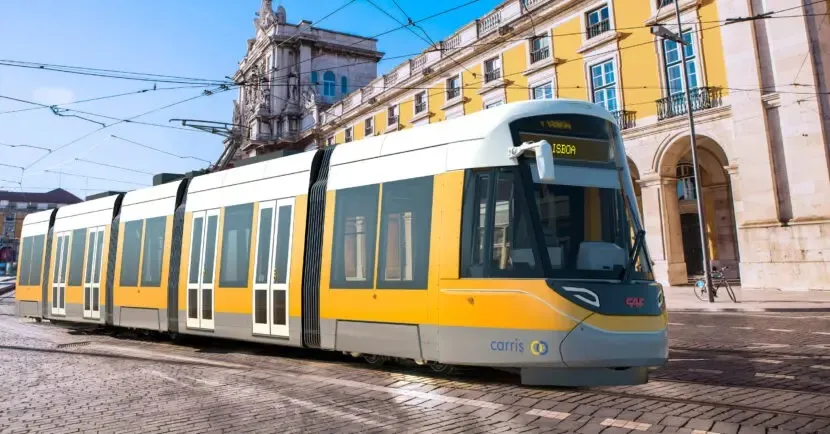New safety technology being installed along some rail lines across the US, including Central Minnesota, aims to prevent deadly train crashes caused by human error. The technology is designed to automatically stop or slow a train to prevent accidents such as a collision with another train or a derailment caused by excessive speed. The changes stem from federal legislation passed in 2008 after a commuter train collided head-on with a freight train in California, killing twenty-five people and injuring 135. An
January 7, 2013
Read time: 3 mins
New safety technology being installed along some rail lines across the US, including Central Minnesota, aims to prevent deadly train crashes caused by human error. The technology is designed to automatically stop or slow a train to prevent accidents such as a collision with another train or a derailment caused by excessive speed.
The changes stem from federal legislation passed in 2008 after a commuter train collided head-on with a freight train in California, killing twenty-five people and injuring 135. An investigation found the train driver was sending and receiving text messages shortly before the crash.
As a result, congress passed the Rail Safety Improvement Act, requiring positive train control technology to be implemented on all class I passenger lines and freight trains carrying certain hazardous materials by 2015.
Work has already begun to upgrade signals along Burlington Northern Santa Fe’s (BNSF) lines in Minnesota and will continue this year, according to Amy McBeth, a spokeswoman for the railway. BNSF has spent about US$300 million on positive train control upgrades on its entire rail system this year, she said. “We are on track to meet that required deadline,” McBeth said, continuing “The travelling public probably won’t notice any difference after the technology is installed”.
2008 Amtrak also will install positive train control aboard its trains that run along BNSF rail lines, says Amtrak spokesman Marc Magliari.
6907 Metro Transit, which operates the Northstar commuter rail line between Big Lake and Minneapolis, expects to have its six locomotives and six cab cars outfitted with the equipment in 2014 after the wayside equipment is tested, spokesman John Siqveland said.
Positive train control uses GPS technology to determine a train’s location and speed. It warns train operators of potential problems, then overrides the driver and stops the train if the operator does not respond within a certain amount of time.
The system requires equipment installed along rail lines as well as aboard locomotives. It’s a complex endeavor expected to cost railroads more than US$13 billion to install and maintain over the next twenty years, according to the Association of American Railroads (AAR), which represents major US freight railroads and Amtrak.
According to the AAR, it is not clear whether railroads will meet the 2015 deadline. A report to Congress from the Federal Railroad Administration last August stated that due to significant technical and programmatic issues most railroads are not likely be able to fully implement positive train control by December 2015.
Holly Arthur, a spokeswoman for the AAR, said that, despite best efforts and financial investments, it is becoming clear that meeting the deadline is no longer realistic. She said that each railroad’s positive train control system is very complex and must operate with other railroads’ systems. “The technology has never been used this way”, she said, “and must be designed, installed and tested before receiving federal certification. This has never been done before.”
The changes stem from federal legislation passed in 2008 after a commuter train collided head-on with a freight train in California, killing twenty-five people and injuring 135. An investigation found the train driver was sending and receiving text messages shortly before the crash.
As a result, congress passed the Rail Safety Improvement Act, requiring positive train control technology to be implemented on all class I passenger lines and freight trains carrying certain hazardous materials by 2015.
Work has already begun to upgrade signals along Burlington Northern Santa Fe’s (BNSF) lines in Minnesota and will continue this year, according to Amy McBeth, a spokeswoman for the railway. BNSF has spent about US$300 million on positive train control upgrades on its entire rail system this year, she said. “We are on track to meet that required deadline,” McBeth said, continuing “The travelling public probably won’t notice any difference after the technology is installed”.
Positive train control uses GPS technology to determine a train’s location and speed. It warns train operators of potential problems, then overrides the driver and stops the train if the operator does not respond within a certain amount of time.
The system requires equipment installed along rail lines as well as aboard locomotives. It’s a complex endeavor expected to cost railroads more than US$13 billion to install and maintain over the next twenty years, according to the Association of American Railroads (AAR), which represents major US freight railroads and Amtrak.
According to the AAR, it is not clear whether railroads will meet the 2015 deadline. A report to Congress from the Federal Railroad Administration last August stated that due to significant technical and programmatic issues most railroads are not likely be able to fully implement positive train control by December 2015.
Holly Arthur, a spokeswoman for the AAR, said that, despite best efforts and financial investments, it is becoming clear that meeting the deadline is no longer realistic. She said that each railroad’s positive train control system is very complex and must operate with other railroads’ systems. “The technology has never been used this way”, she said, “and must be designed, installed and tested before receiving federal certification. This has never been done before.”









